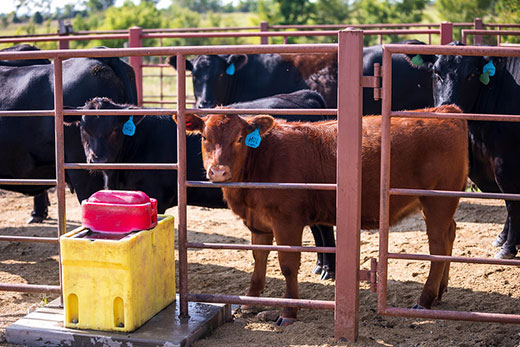
In a recent survey, 61% of beef producers said their business to consumer marketing increased in 2020 and 2021. (File photo)
Survey: Consumers’ interest in buying local beef grows
COVID increased producers’ opportunities to sell directly to consumers
April 6, 2022
By Pat Melgares, K-State Research and Extension news service
MANHATTAN, Kan. – Kansas State University researchers are looking more closely at the dynamics of marketing beef directly to consumers in the hope that they can help farmers capitalize on Americans’ ever-increasing interest in locally produced foods.
In an initial survey of 198 consumers and 66 beef producers, they found that the COVID pandemic greatly increased consumer’s interest in purchasing Kansas-raised beef directly from the farm.
Meanwhile, 61% of the beef producers surveyed said their business to consumer marketing – known as B2C – increased in 2020 and 2021.
“Beef producers look around and they see the price of beef in the grocery store and they see the price they’re getting for live animals,” said K-State Research and Extension farm management economist Gregg Ibendahl, “and they see the margin (between the two prices) has expanded quite a bit.”
He added: “Producers are thinking ‘there’s got to be a way I can earn some of that margin back for myself.’ By selling direct to consumers, they can, but in doing that they are going to have to take on a lot of the roles that packers and retailers are doing. But there is potential for more profitability for producers through direct marketing.”
Travis O’Quinn, a meat scientist in K-State’s Department of Animal Sciences and Industry, said consumers have a desire to establish a relationship with local producers and buy local products.
“Coupled with the availability of beef in Kansas, that motivation has spawned this market of consumers that are looking to purchase beef from the local producer and go straight to their freezer with it.”
But, the two researchers say there are gaps in the information available to the producer and consumer that may be preventing some from selling and buying locally.
“We are trying to find out what the disconnects there are along the whole process,” Ibendahl said. “For producers, there are issues about how profitable direct marketing really is. I think there is a perception that direct marketing is profitable, but when you’re not doing detailed enterprise analysis accounting… it’s hard to say that direct marketing is more profitable.”
For consumers buying local beef – which often means buying a live animal and paying for the meat to be processed – there are misperceptions about what they are actually buying.
“There are a lot of surprises for first-time consumers that go through this channel,” O’Quinn said. “For example, there are only two briskets on every beef carcass. Another is that when you purchase a 1200-pound beef animal, a lot of consumers think they’re going to get 1200 pounds of beef, and that’s certainly not the way it is. Those are the kinds of facts that come as a surprise to consumers.”
The K-State research is funded by the USDA’s National Institute of Food and Agriculture. The work done to date is available in an online publication from the K-State Department of Agricultural Economics.
Ibendahl said the research team is still looking for beef producers to participate in the study, in the interest of helping producers more fully understanding the financial advantages of B2C marketing. For more information, contact Ibendahl by email, ibendahl@ksu.edu.

